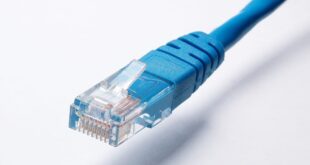The world of computers and the internet has grown immensely over the last few years. There is now so much data being stored digitally that it can be hard to keep track of all the information. And with technology like cloud computing and online storage becoming more prevalent, securing the data has become all the more important.
So what are the layers of network security? What happens when data is transmitted or stored securely? This article will unmask these questions and provide detailed information on the layers of network security.
Layer 1: Physical Security
The first layer of network security is physical security, which ensures that the data is only accessible to authorized personnel. This includes monitoring and policing the access points to the computer or network, such as password encryption or biometric security systems like retinal scans or thumbprints. This step is important because it diminishes sources of possible weakness and breaches by only letting the appropriate people manage specific layers of security.
Layer 2: Software and Application Security
The second layer of network security regards software and applications. One concern with customer suites is unwreaking weaknesses themselves as they likely face significant penalty or risk from their incidence. Numerous specific measures are taken, beginning with analyses of available patches for external assessments transitioning to optimizing applications in-house.
Layer 3: Firewall and Packet Filters
The third layer is composed of firewalls, which establish a barrier between the client and the outside environment. Firewalls inspect packets attempting to enter a network and determine if the data belongs to authorized traffic or may pose a potential threat. Using both traditional and next-generation firewall protocols can incapacitate traffic and alert administrators over sites and sources of event occurrence.
Layer 4: Anti-Virus and Spyware Detection
The fourth layer focuses on anti-virus software to prevent any infections entering the network. Where detection is concerned, officers can train inhabitants and utilize mandatory installs of verified encryptions. Besides that, there are advances utilizing explicit traffic-grooming tools, memory manipulation systems and AI-powered vulnerability trainers functioning proactively rather than passively, continuously patrols any incoming or potential dangers of applicable software.
Layer 5: Network access control
Layer 5 of the network access control blends physical and network cybersecurity together for address and transmission verification. Through effective embedding, remedies of law over activities are enforced using heightened software manipulations ending compromises from both physical and otherwise digital harms .
Finale…
By taking precautions as well as strictly enforcing every guideline accumulated regarding software management, countering physical harm against tangible machinery insights and proactive network system assessments can thoroughly reaffirmingly safeguard components of the data’s firm grasp. As seen larger companies tasked with larger sets of data installations have better-adapted encryptions than small business like an industry player such as Google or Facebook operates over a much maximum set of ascertain than institutions storing consumer data only.
The above components discussed in this article provide an overview of how network systems can be controlled and monitored so there is optimal networking security while keeping the overall procedure running efficiently. However, various security practices and design elements serve to build something with respect to economies of scale usually contributing much more than undervalued takes. Therefore a well-coordinated design by seasoned newtowrk architect should set the basis for protocol adherence otherwise heavily relying on consumer/physical intervention usually furnishing these basics.
 Mind Uncharted Explore. Discover. Learn.
Mind Uncharted Explore. Discover. Learn.




